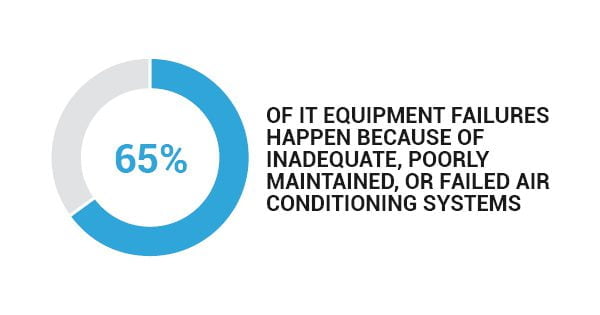 When it comes to protecting an organization’s data, the physical data center needs to be safeguarded against any threats. While 65% of IT equipment failures happen because of inadequate, poorly maintained, or failed air conditioning systems, mechanical failures are not the only concern. Environmental threats can also cause entire systems failures and physical damage.
When it comes to protecting an organization’s data, the physical data center needs to be safeguarded against any threats. While 65% of IT equipment failures happen because of inadequate, poorly maintained, or failed air conditioning systems, mechanical failures are not the only concern. Environmental threats can also cause entire systems failures and physical damage.
And in some areas, earthquakes may be the biggest threat.
To prevent major damage to their electronic packaging cabinets as a result of earthquakes, many organizations are opting for seismic data racks. This two-part guide will explain the function of seismic racks for IT rack protection and the different types of racks available.
What are seismic racks?
When an earthquake hits, a data center’s server racks could potentially be destroyed if they are not secured well. Seismic racks solve this problem. While they come in various types, most use bolts, anchors, and shock absorption technology to keep a rack in place in case of a seismic event. Quality seismic racks are tested for effectiveness, ensuring that they can hold up to even the most intense vibrations.
How do I know if I need a seismic rack?
If your organization operates close to a fault line, it is generally a wise decision to install seismic racks. You can find out your exact earthquake risk on the FEMA website. Consider this risk and determine whether seismic racks are worth the investment.
What should I consider when installing seismic racks?
When installing your new seismic racks, you should first consider the layout of your data center. Determine how you can optimize cable and airflow management with this new equipment. If you have fine tuned this process already, adding this new equipment may warrant adjustments. On a larger scale, you should also consider building codes. By knowing the soil strength and foundation quality of the building, you can bind the racks accordingly.
The security of your electronic packaging cabinets is central to your organization’s success. Since large quantities of important information are stored on these servers, preserving them is critical, especially during natural disasters. In the next post, you will learn about the different types of server racks and how to choose one that is right for you.
